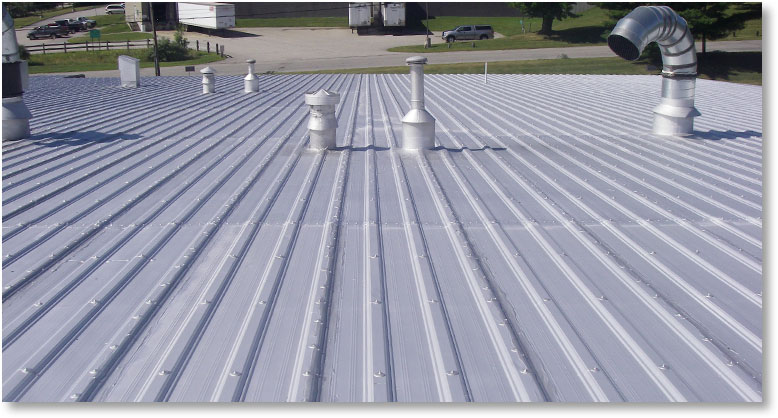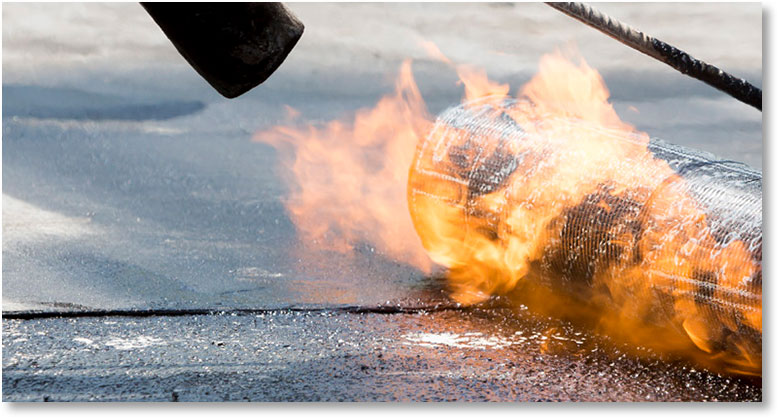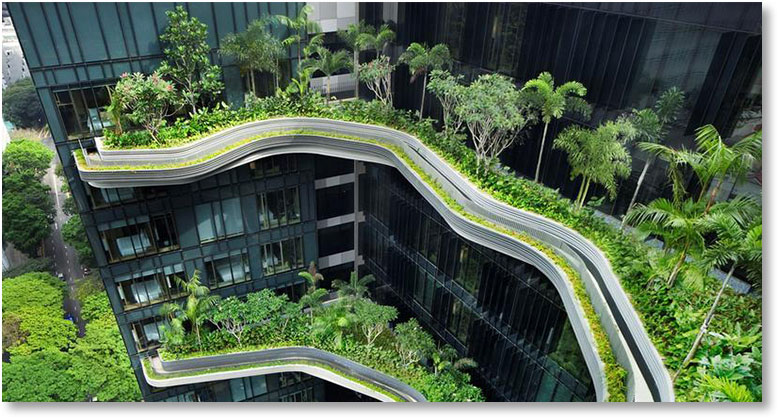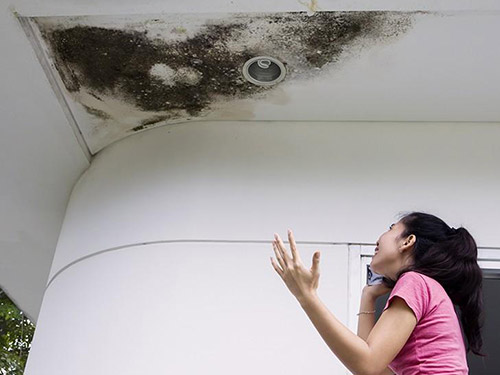Looking at a city’s skyline, it is sometimes hard to believe that there are so many different types of roofs for different structures, and some of them can do more than just weatherproof the top of a building. In this post, we will explore the waterproofing and roofing systems for the most popular commercial roof types.
Built-up Roofing
Built-up roofing, also known as BUR, is built with multiple plies (layers) alternating between asphalt and a supporting fabric or roofing felt with a final layer of gravel or stone on the top surface. In this way, BUR can help to control costs or meet certain building requirements. Essentially, the more plies you have, the greater the cost. BUR has been used in construction for over 100 years and is considered one of the toughest roofing types available. In today’s commercial building landscape, BUR is a favourite choice for roof-top decks with heavy foot traffic because it can be very cost-effective and easy to repair.
 Metal roofing is another common type of roofing for commercial buildings because of the wide variety of metal materials available for use, such as:
Metal roofing is another common type of roofing for commercial buildings because of the wide variety of metal materials available for use, such as:
- Corrugated galvanized steel
- Aggregates of zinc, aluminium, and silicon-coated steel
- Metal tile sheets
- Copper
- Aluminium
- Stainless steel
- Tin
Since most metal roofing material is light, it can be installed on top of the existing roof without incurring additional costs for removing or replacing an old roof. As metal is a material that is susceptible to rusting, certain protective coatings (waterproofing, rust, and UV) must be added to the surface to safeguard it from prolonged exposure to direct sunlight and other environmental hazards. Furthermore, metal roofs have strong fire resistance ratings that impedes the spread of fires, making it an ideal choice for hospitals, schools, transportation buildings, as well as government and military structures.
Modified Bitumen Roofing
 A close cousin of the BUR, the modified bitumen roofing membranes are also installed in layers. These roofing systems are generally applied using the torch method, asphalts, or cold adhesives. The most common type is the two-ply systems which are attached to commercial rooftops to ensure maximum stability. Apart from its high durability and weather-resistance, two-ply modified bitumen is manufactured and installed as sheet rolls which ultimately ensures quality control for a roofing project. This type of flat roofing caters well to buildings with a lot of foot traffic because it has enhanced tensile strength and is easy to maintain and clean.
A close cousin of the BUR, the modified bitumen roofing membranes are also installed in layers. These roofing systems are generally applied using the torch method, asphalts, or cold adhesives. The most common type is the two-ply systems which are attached to commercial rooftops to ensure maximum stability. Apart from its high durability and weather-resistance, two-ply modified bitumen is manufactured and installed as sheet rolls which ultimately ensures quality control for a roofing project. This type of flat roofing caters well to buildings with a lot of foot traffic because it has enhanced tensile strength and is easy to maintain and clean.
Single Ply Roofing
Single-ply roofing consists of flexible sheets of synthetic polymers that fall into two main categories – Ethylene Propylene Diene Monomer (EPDM) and Thermoplastic Polyolefin (TPO) and are used mainly in flat roofing solutions.
EPDM is constructed from a single-ply rubber material which is highly resistant to UV light and certain solvents and chemicals. It also offers greater flexibility in colder temperatures and because it is fully cured, it reduces the time it takes for installation.
TPO offers long-lasting durability and versatility and has strong weathering capabilities. Its advanced reflectivity properties also help to keep buildings cool and increase energy efficiency. In this way, TPO is an excellent choice for vegetated roofing systems, both for waterproofing and as a root barrier.
Green Roofing

Nowadays, many commercial properties and businesses invest in a different kind of roofing option as part of their efforts to be more environmentally and socially conscious. Green roofs, also known as eco-roofs, refer to vegetation that is planted over a waterproofing system on a roof. Green roofs have gained popularity in recent years because they not only look beautiful, but they are also versatile in terms of their design and functions. The biggest benefit of a green roofing system lies in its ability to absorb stormwater in its vegetation and soil while simultaneously creating natural insulation that combats the effect of Urban Heat Islands.
Roofing Applications
Liquid-applied and sheet-applied waterproofing products and systems for different types and forms of building roofs.


 Waterproofing and Roofing
Sheet vs Fluid Applied Waterproofing
Waterproofing and Roofing
Sheet vs Fluid Applied Waterproofing
 Waterproofing and Roofing
Common Problems Associated with Poor Waterproofing
Waterproofing and Roofing
Common Problems Associated with Poor Waterproofing
 Concrete, Waterproofing and Roofing, Infrastructure
The 5 Main Benefits of Crystalline Waterproofing
Concrete, Waterproofing and Roofing, Infrastructure
The 5 Main Benefits of Crystalline Waterproofing
